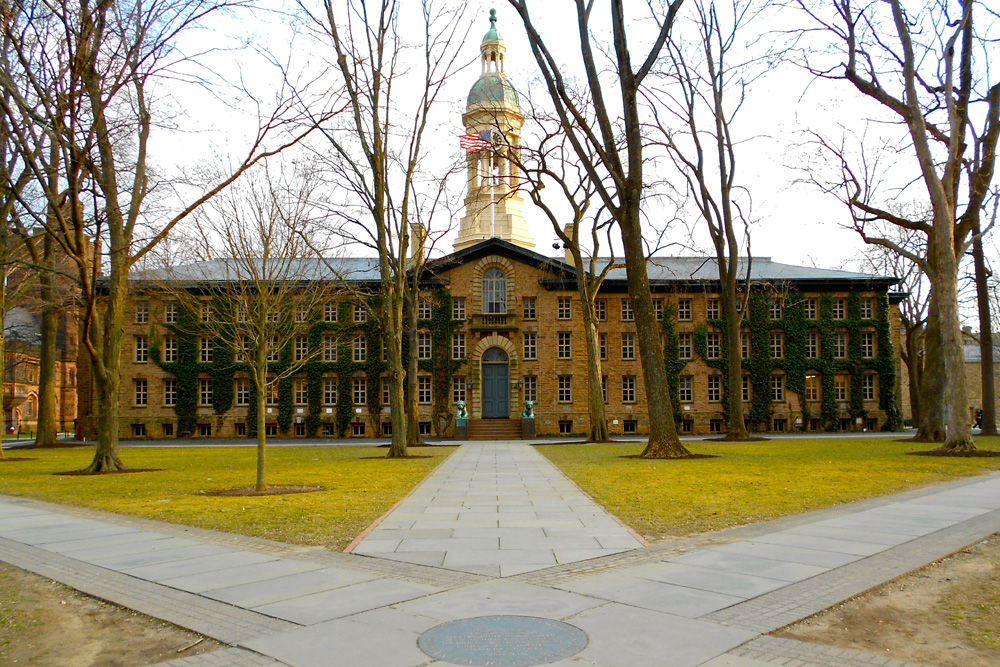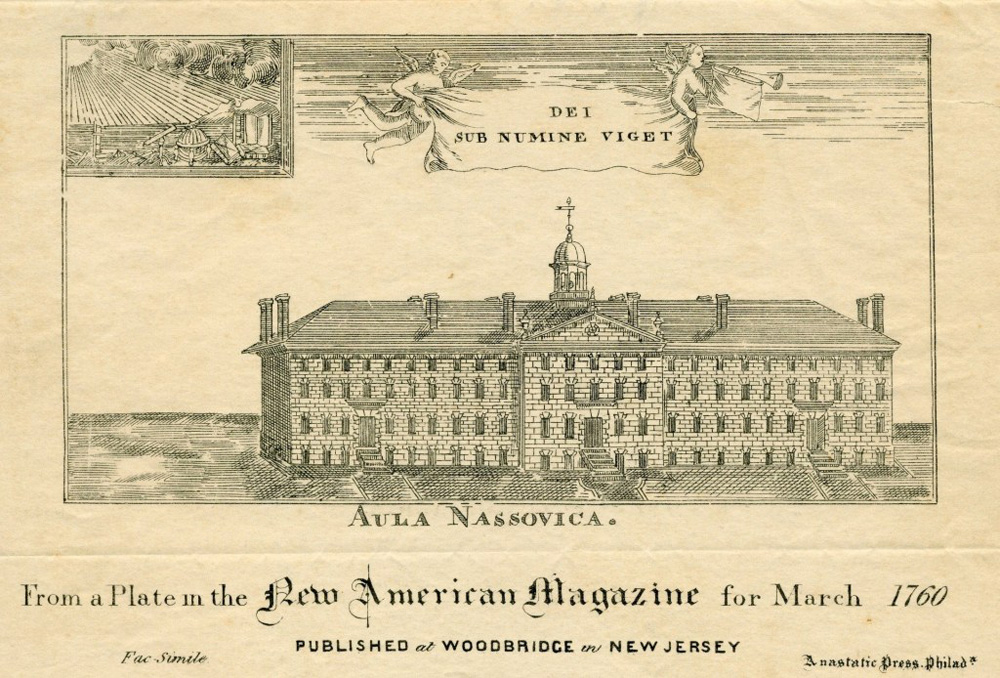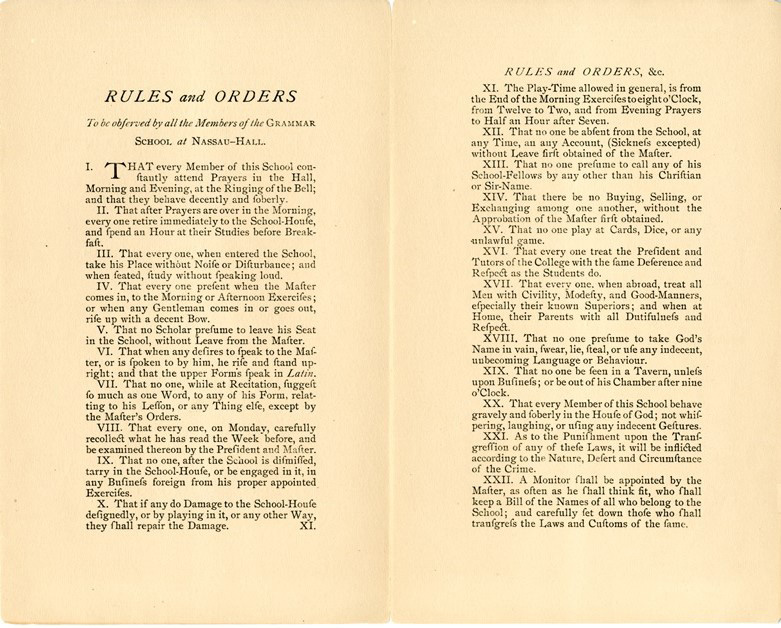
Part of The College.

One of Princeton’s most iconic visuals, the structure you see today would be nearly unrecognizable to its original architect, Philadelphia’s Robert Smith. President of the College of New Jersey (now Princeton University) Aaron Burr, Sr. wrote proudly of its 1756 construction “in the plainest and cheapest manner, as far as is consistent with Decency & Convenience, having no superfluous Ornaments.” Though its design was Georgian, it was made of local fieldstone, giving it a modest appearance evocative of the nearby farmers’ homes, which would not have been accomplished with a brick structure. Nassau Hall was, in fact, the largest stone building in the colonies at the time of its construction.
For a long period, Nassau Hall housed the entirety of the college: classrooms, dormitories, a library, and a prayer hall. Yet even before Nassau Hall was famously occupied by the British and reclaimed by Washington’s troops in the Battle of Princeton, classes were already greatly disrupted by the Revolutionary War. In the years leading up to that 1777 conflict, the building was used as a barracks and hospital. So too were revolutionary sentiments disruptive of the day-to-day. New debates arose as students applied egalitarian ideals to their study. Students were active, sometimes violent, in advocating that religion and education be divorced. President Samuel Stanhope Smith accused students of “vice and irreligion.” Some even blamed the 1802 fire at Nassau Hall on rebellious students.
After a disruption in the Continental Army at Philadelphia, the Continental Congress used Nassau Hall as its temporary meeting place during the summer of 1783. Here Washington received official thanks for his service in the war, and Congress received news of peace with Britain. President of Congress Elias Boudinot, who brought the capital here and whose sister Annis lived at Morven, wrote he was “greatly mortified” that the peace could not be properly celebrated from a “small Country village.”
Original Sections: Nassau Hall suffered several fires in the 19th century, leading to some less than faithful reconstructions. Several of those changes have been reversed, but changes to the lintels, windows, and entries remain. The back section of the building is not original.
Present Use: Princeton University administrative offices

First known image of Nassau Hall, 1760.
Princeton University Library. Department of Rare Books and Special Collections. Seeley G. Mudd Manuscript Library. Princeton University Archives.

Nassau Hall also housed a grammar school for younger students in the 18th century. This documents the “Rules and Orders” of the school, c. 1752
Collection of the Historical Society of Princeton